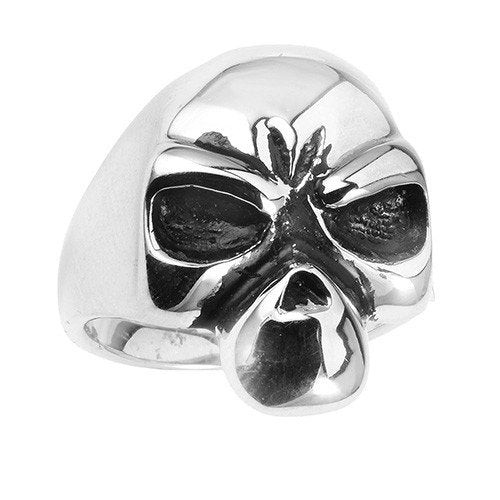Stainless Steel Skull Ring with Crossed Bones.
The Skull & Crossbones symbol, as popular as it is, is also one of the most cryptic of all symbols when it comes to its history. The symbols most commonly associated with the Jolly Roger, a flag emblazoned with a skull & crossbones that pirates would use to identify their ships.
The symbol's origin, however, is an unsolved mystery that leads historians back 2,000 years.
The symbolism of the skull and crossbones has its traces in the ancient era. It was first seen on on the tomb of Tutankhamun in Ancient Egypt, with the cross-diagonal layout of judgement and pity formed the basis of an evolving.
It is widely believed that the skull and crossbones was first used by the Knights Templar in the Middle Ages. The Templars or Knights Templar, occasionally documented as the Order of the Temple, The Poor Fellow-Soldiers of Christ and the Temple of Solomon was the largest charity for nearly 2 centuries, especially after it was officially endorsed by the Catholic Church in 1129. Its pacifist members became known for many good deeds, and also for the supposed introduction of the Skull & Crossbones.
According to Masonic legend, the skull and crossbones are the bones of Jackes de Molay. In an effort to seize the riches of the Templars, the Church ordered that the society be disbanded. deMolay, the 23rd and last Grand Master of the Knights, was burned alive by the Church. When three Templars came looking for his bones, they found only his skull and femurs. By this time the Templars had become accomplished mariners, and the skull and femurs of the last Grand Master became their nautical symbol – the Jolly Roger.
The skull & crossbones which adorns the pirate flag, more popularly known as the Jolly Roger, also saw its use in naval warfare. The symbol served to identify the unit. Occasionally, the Jolly Roger became a victory flag, flown to celebrate the toughness which wins a victory, and which victors and pirates share.
Sizes: 10-14
Material: 316L Stainless Steel



























